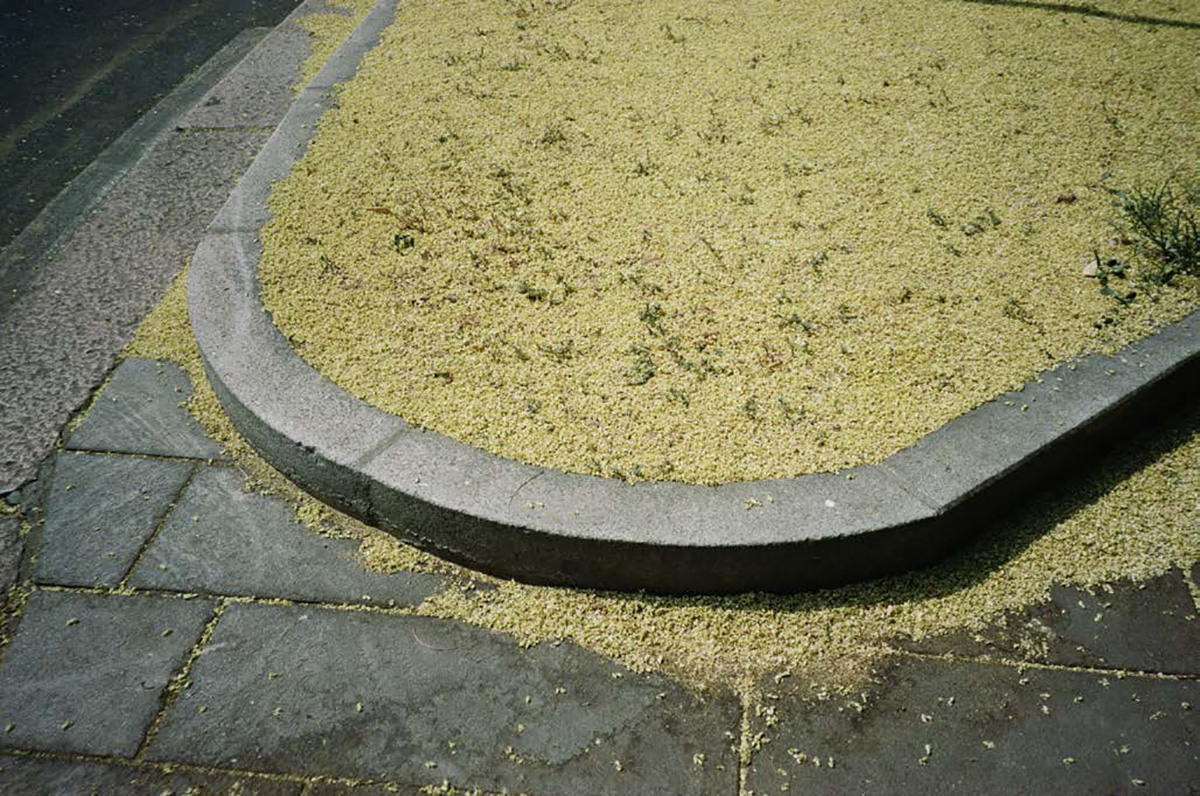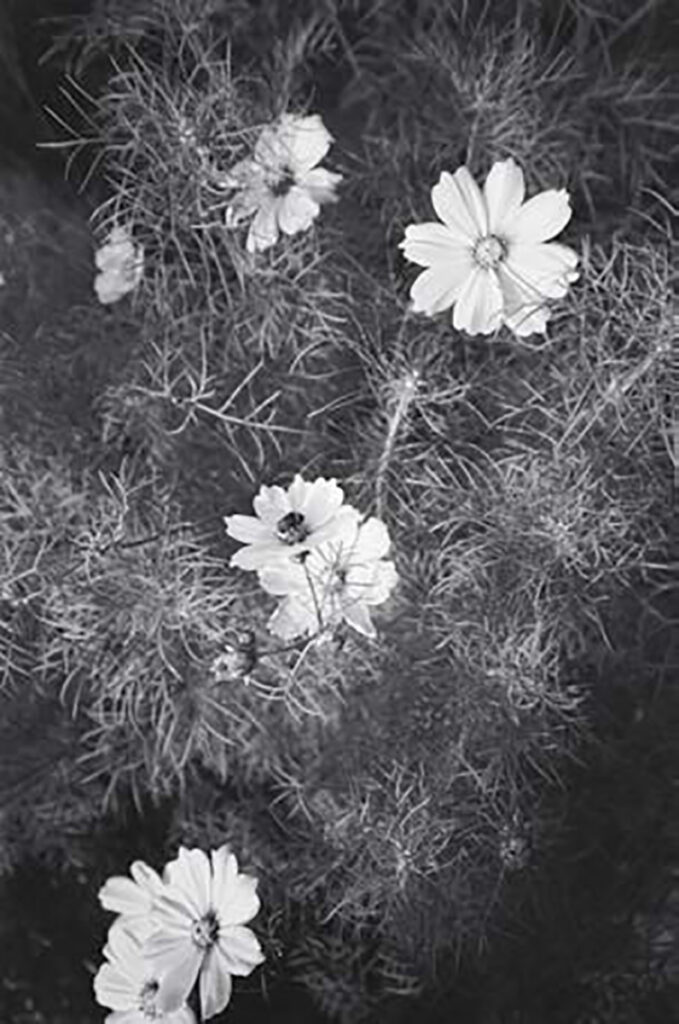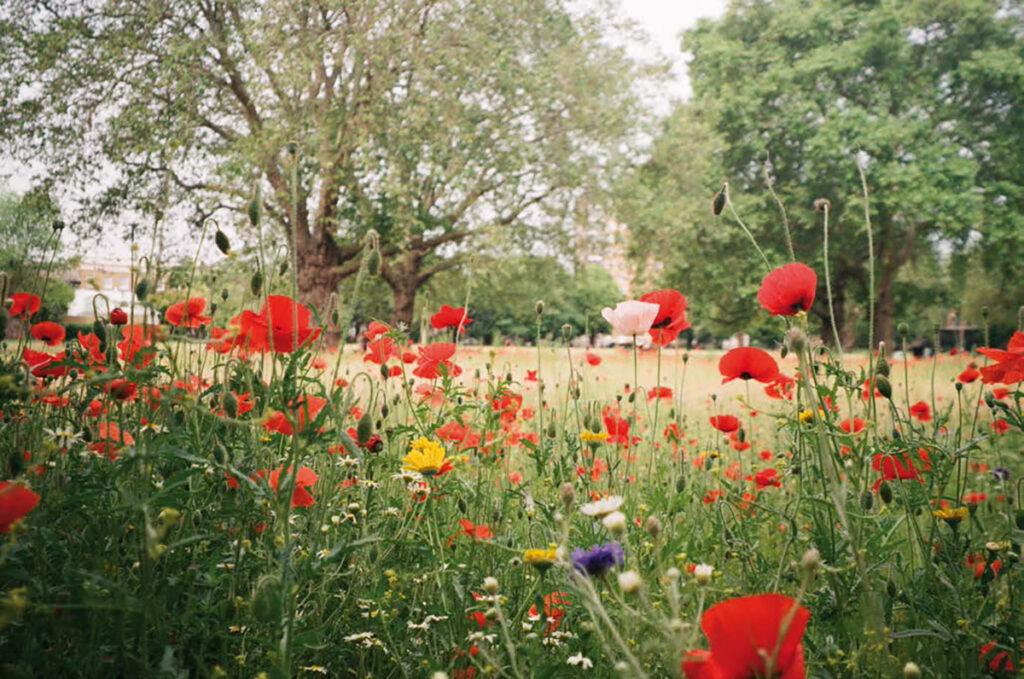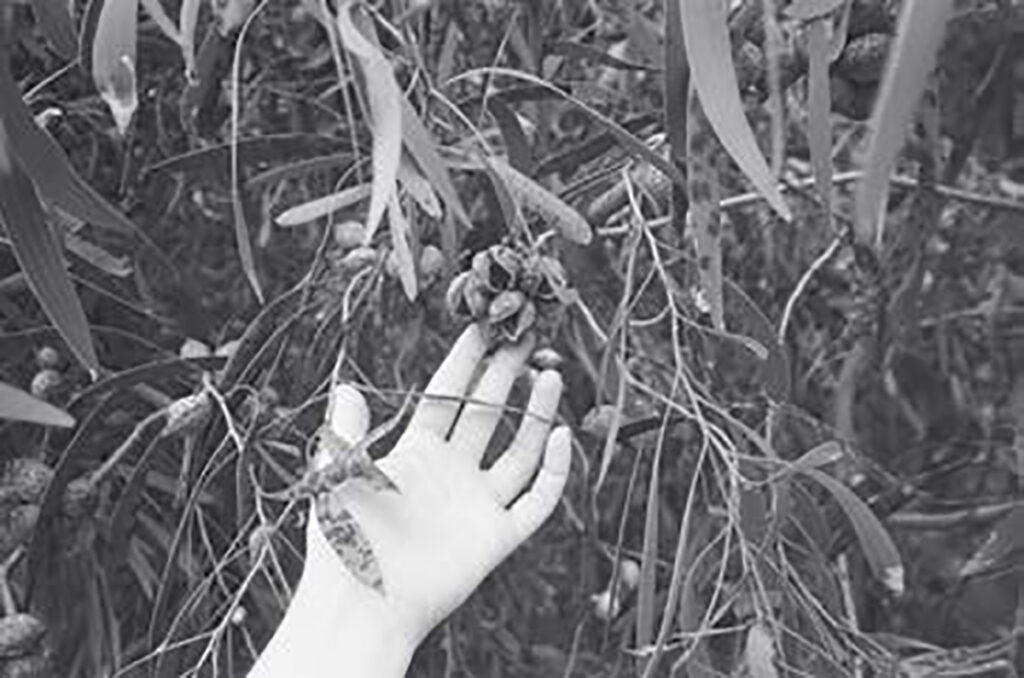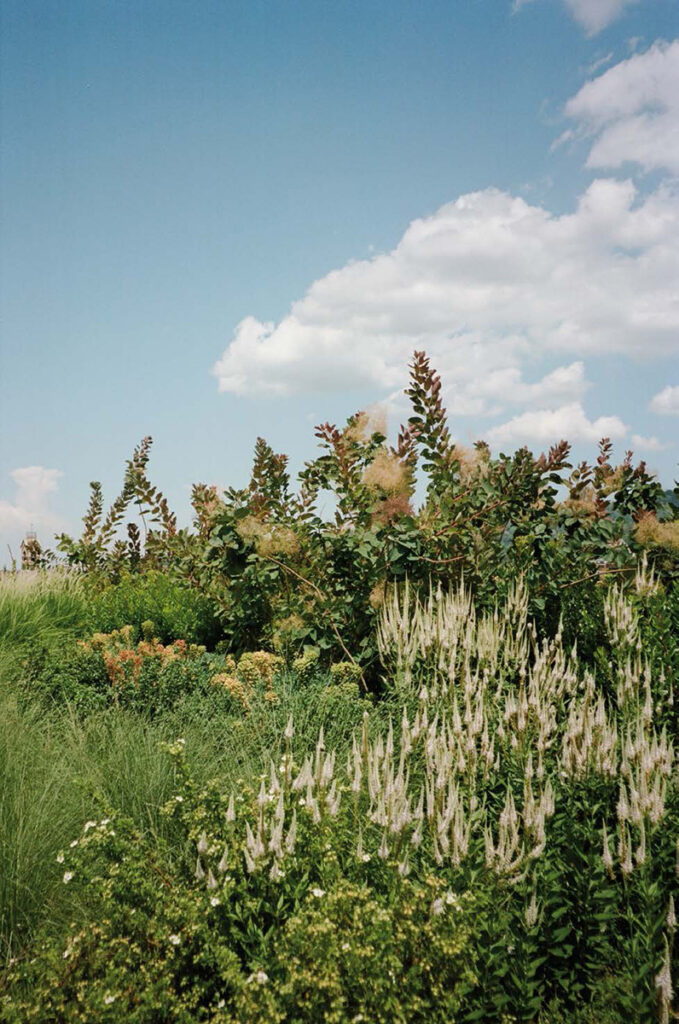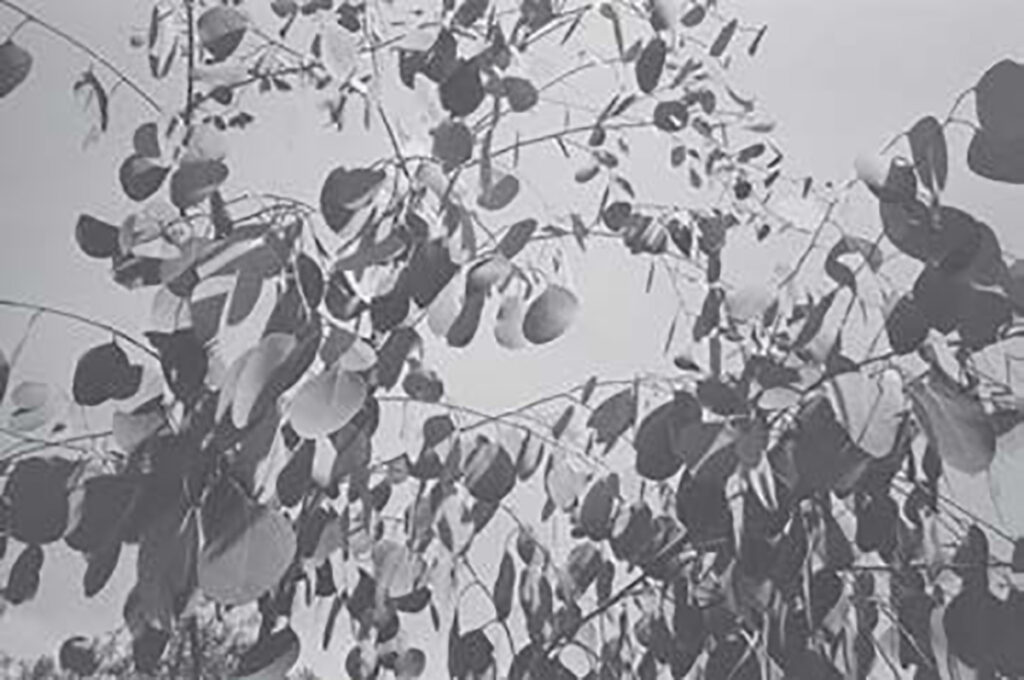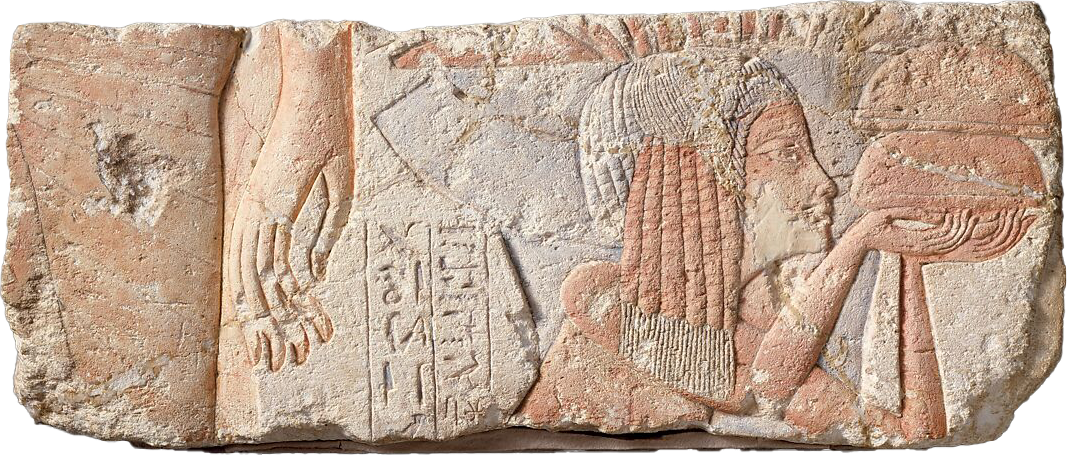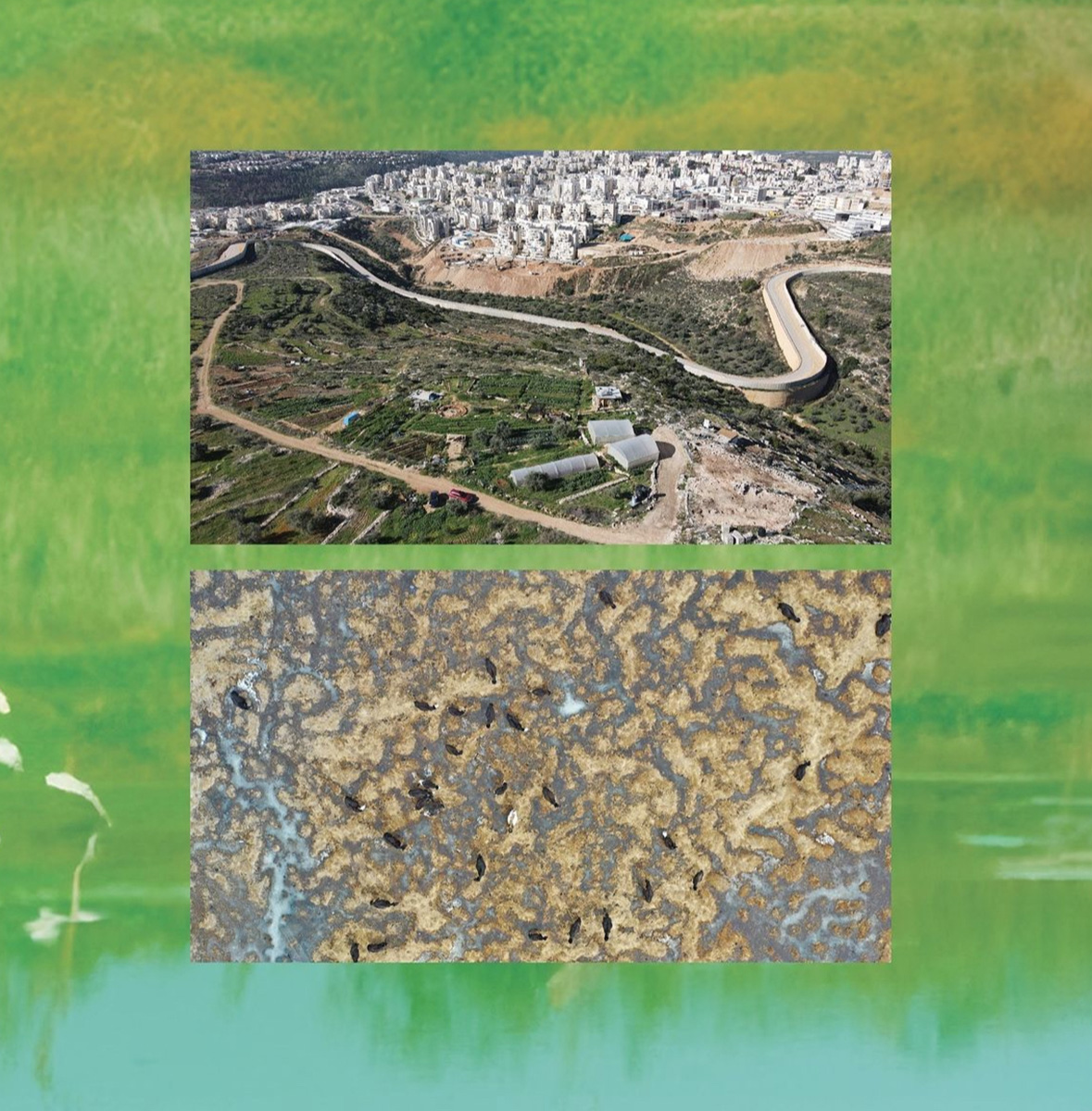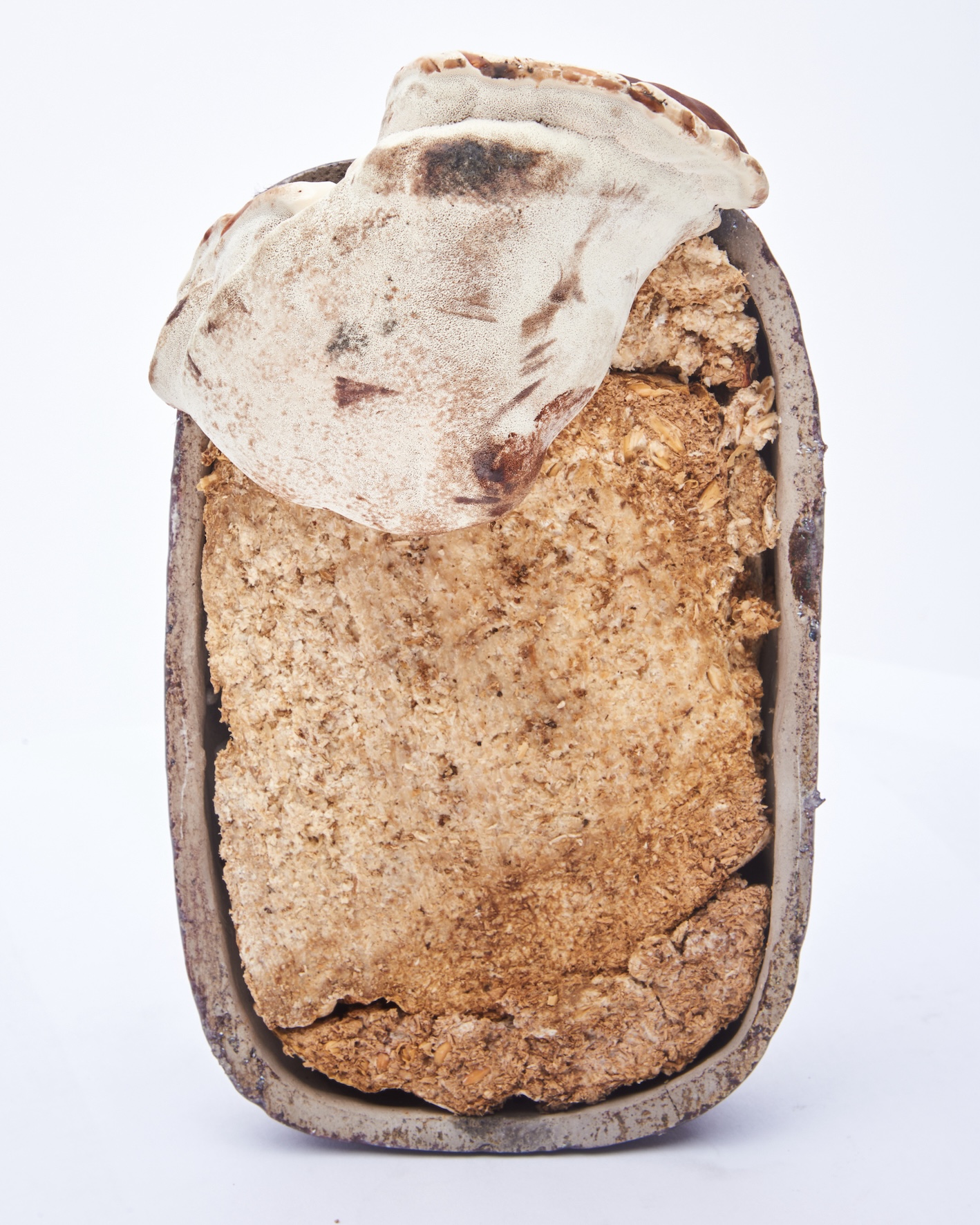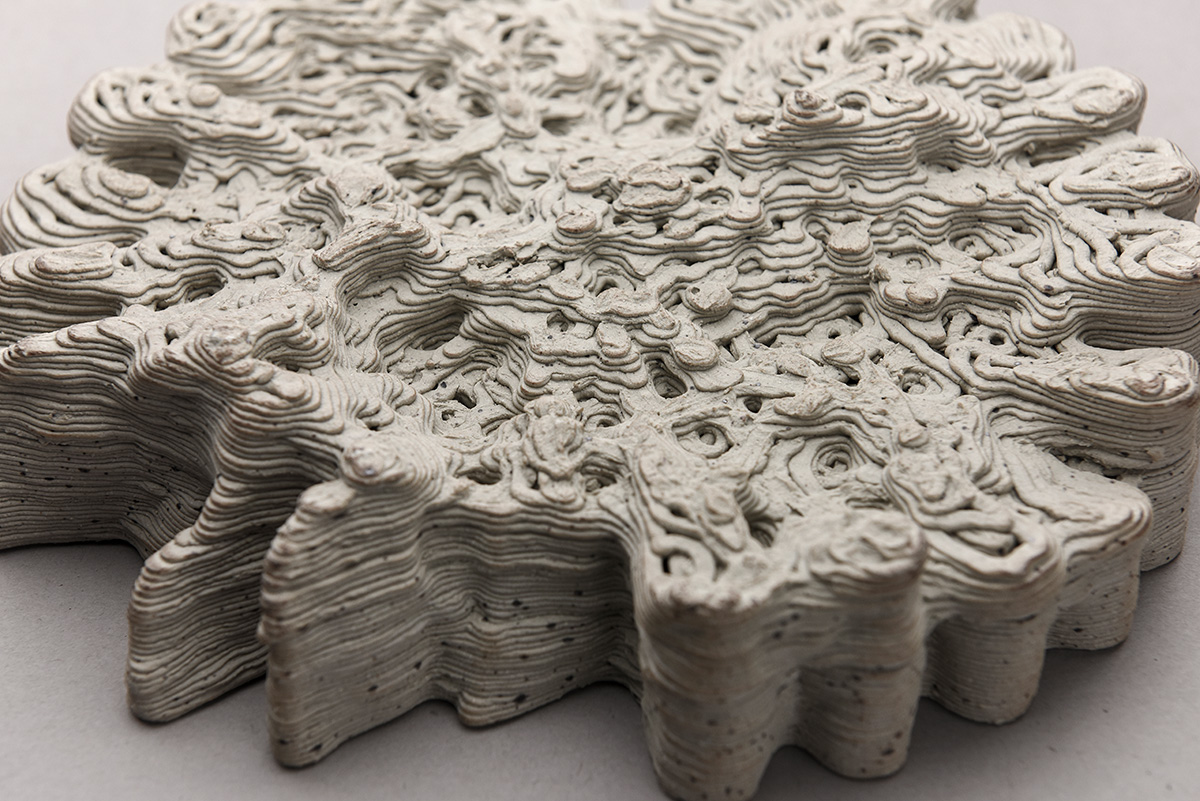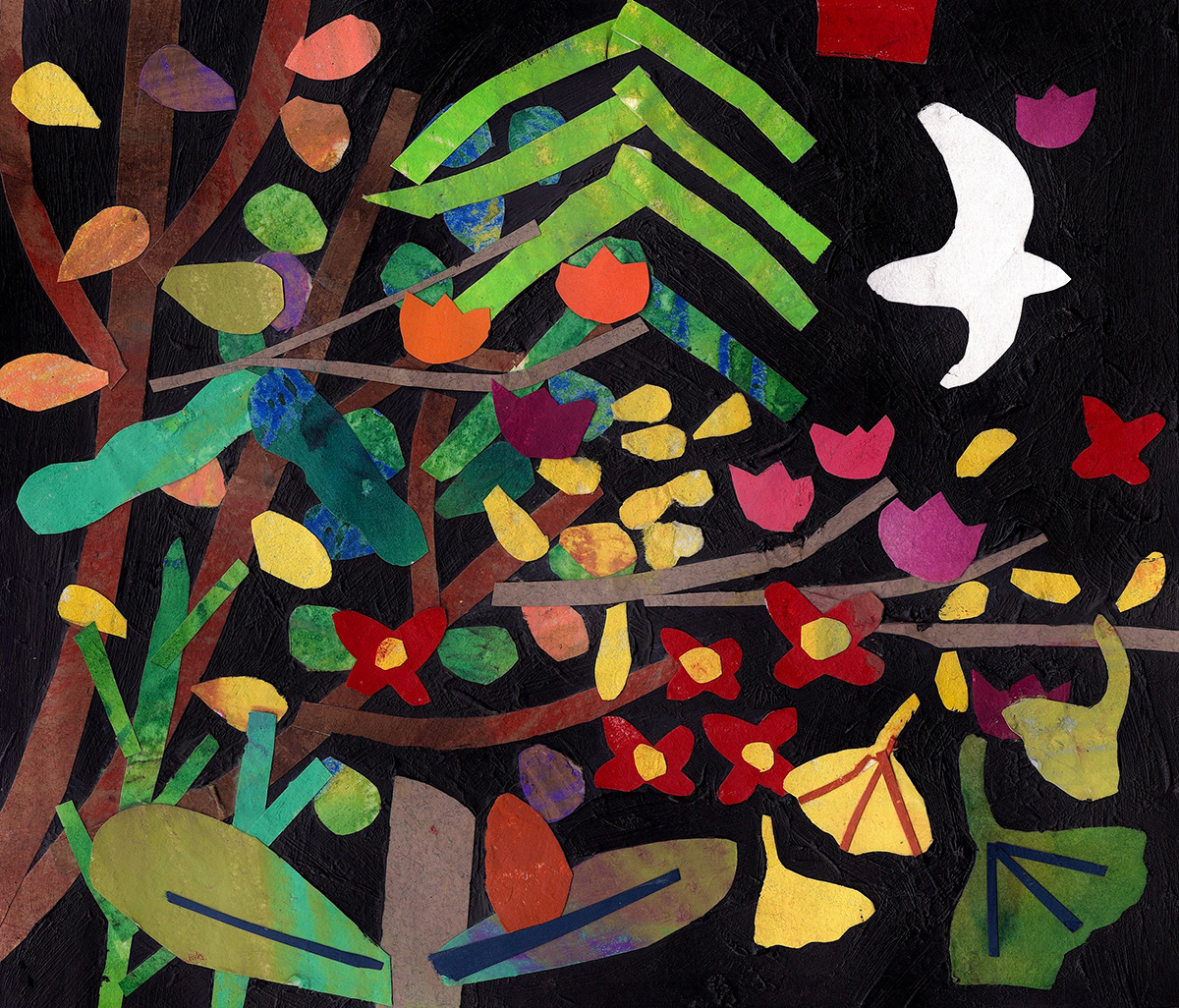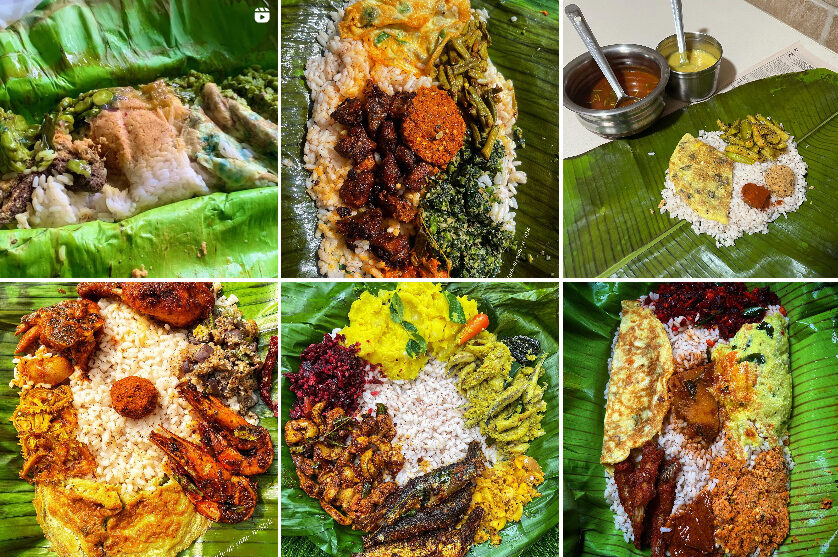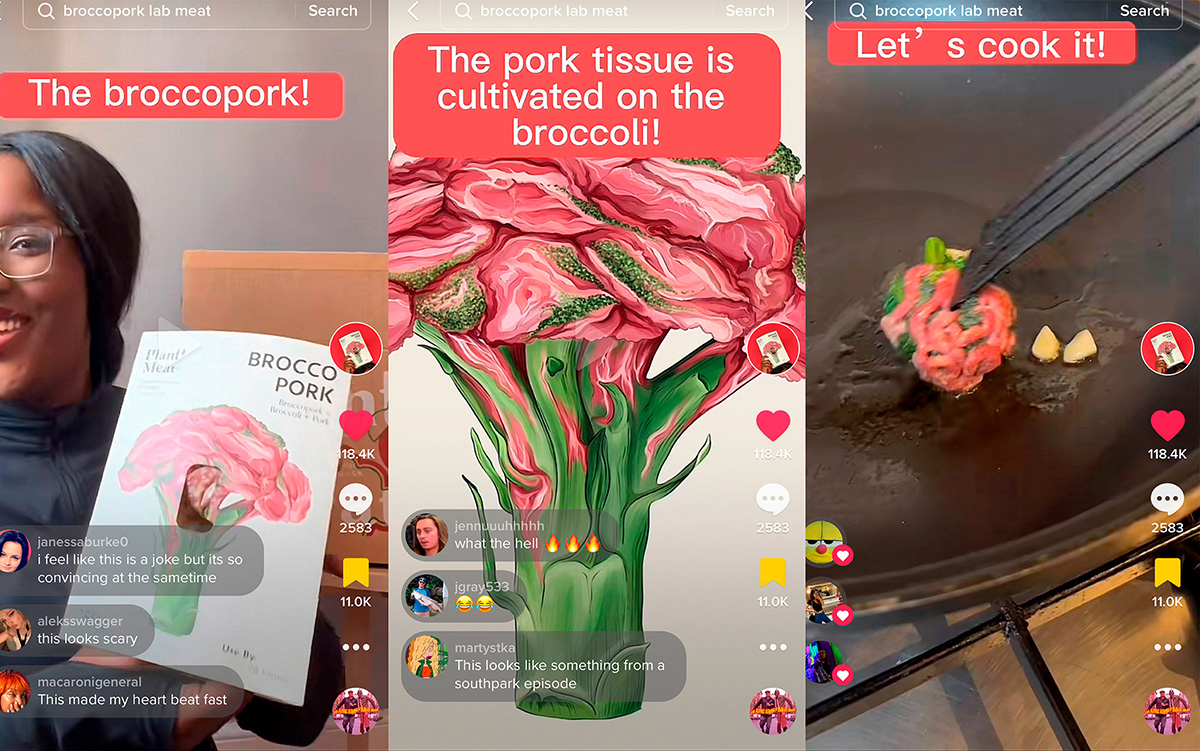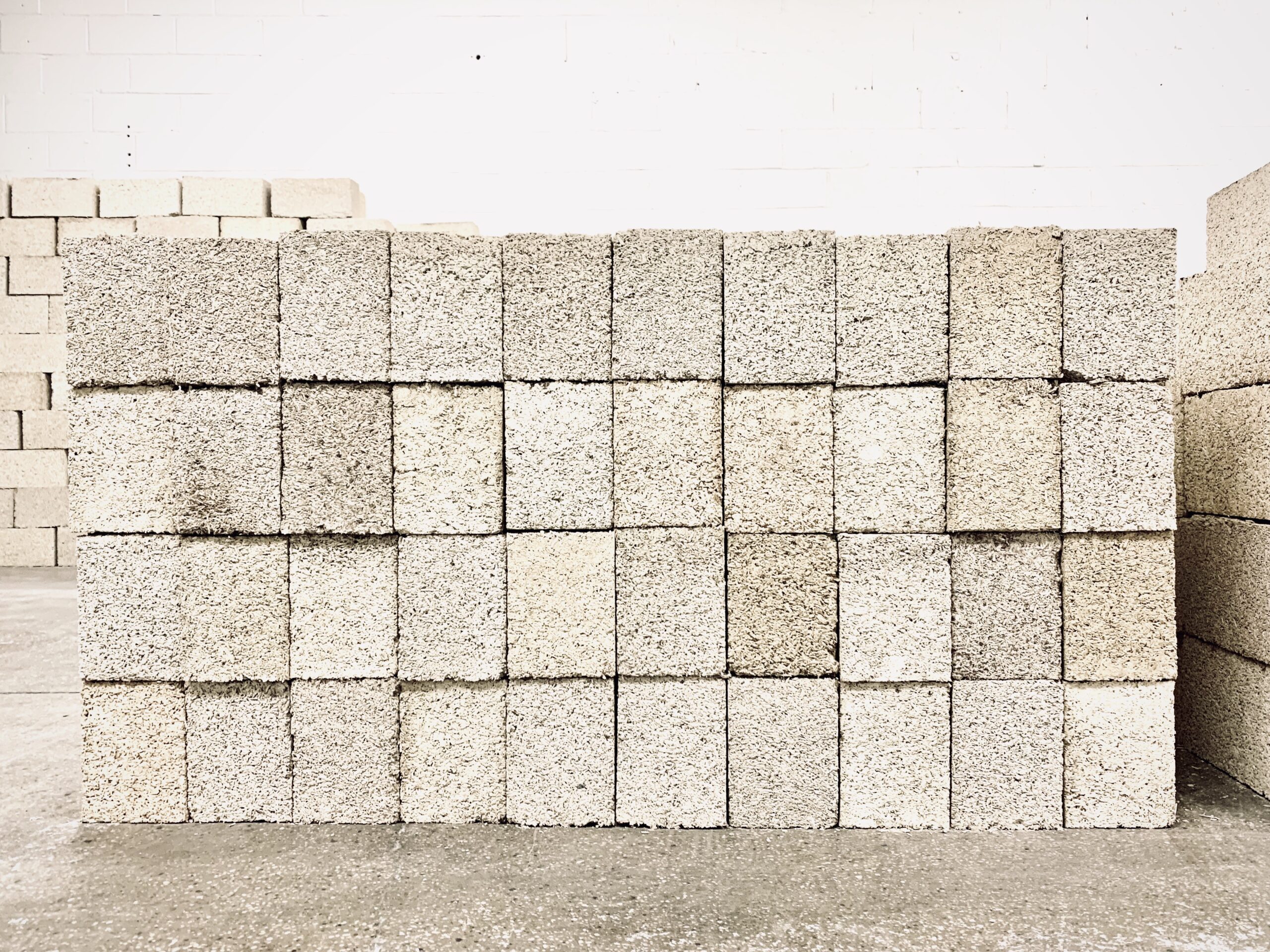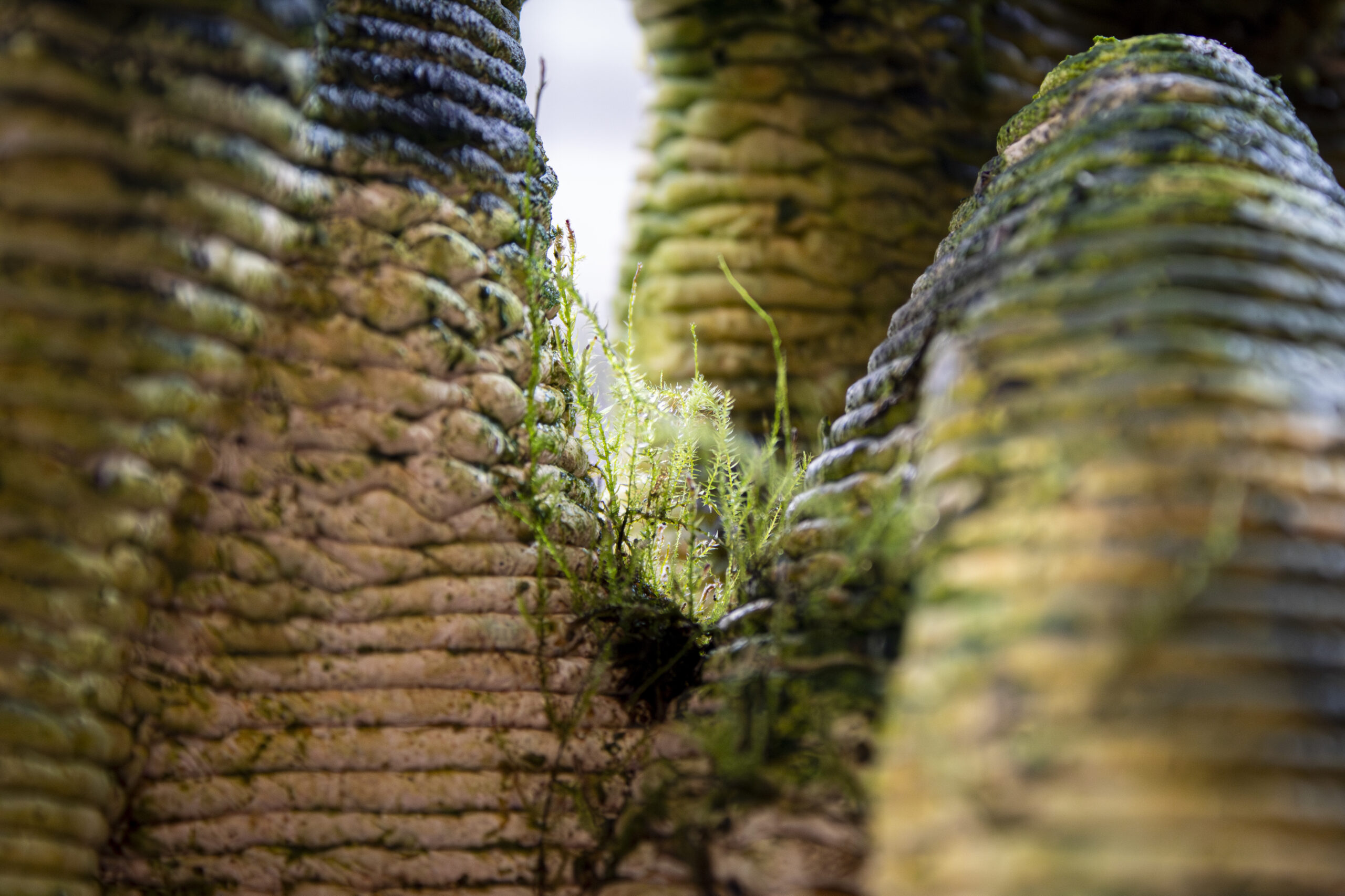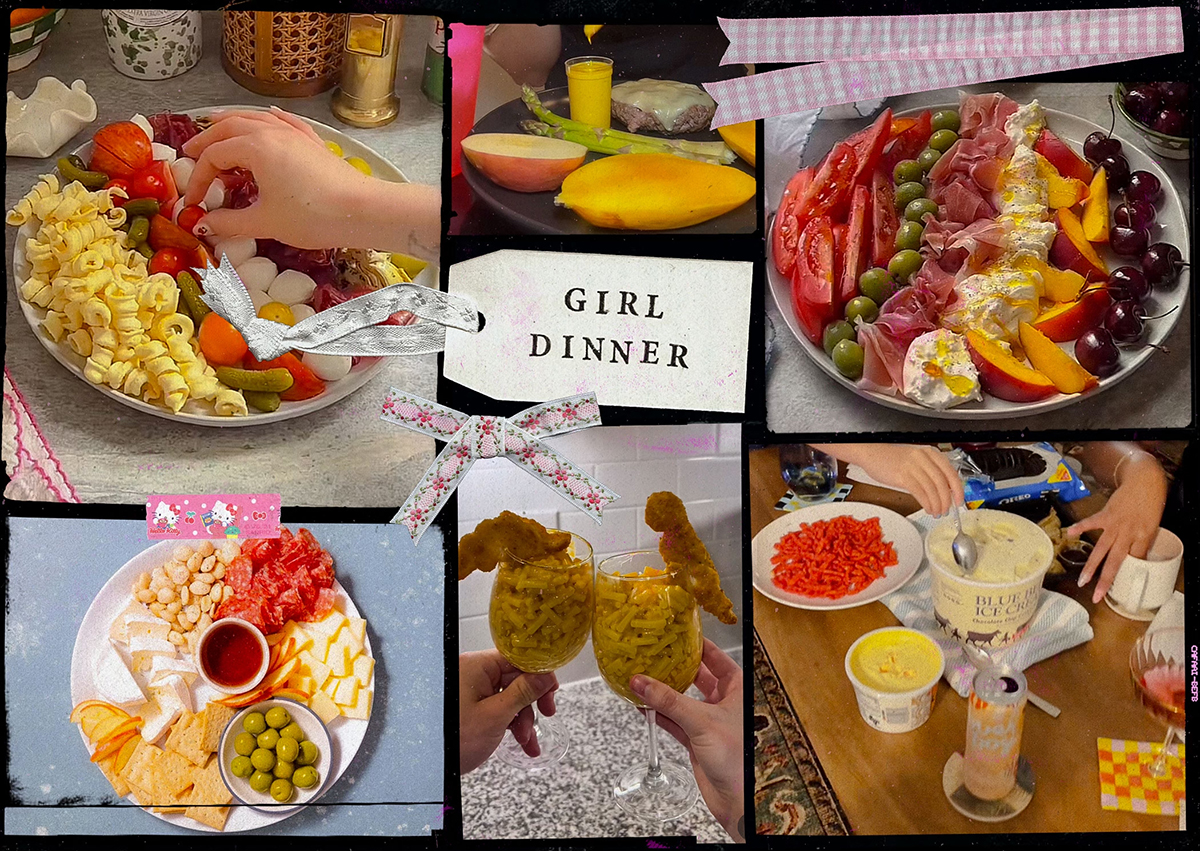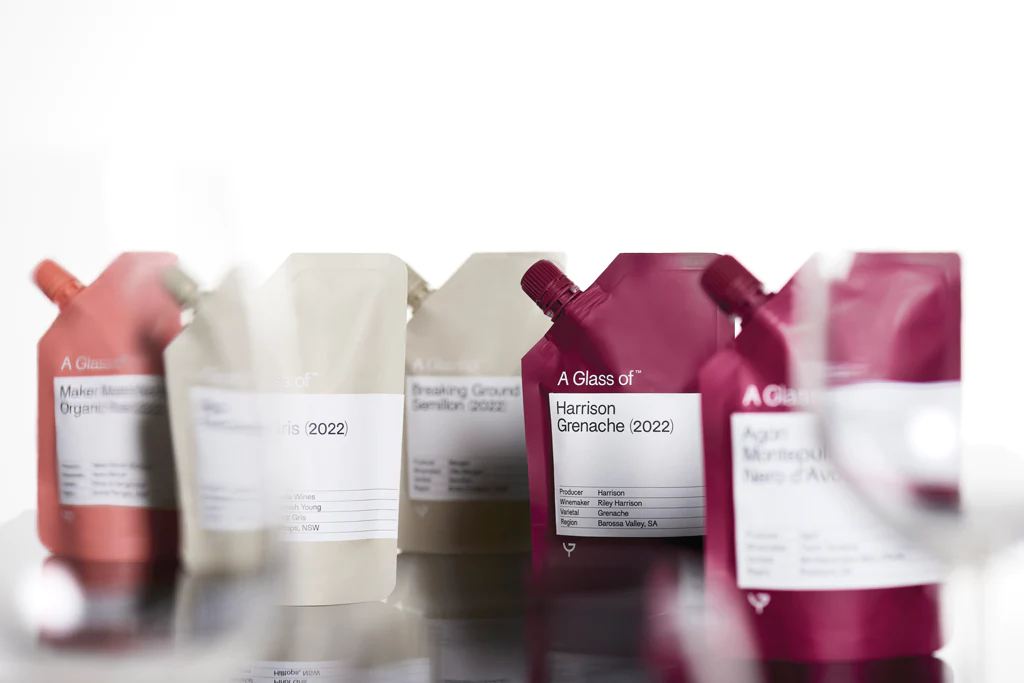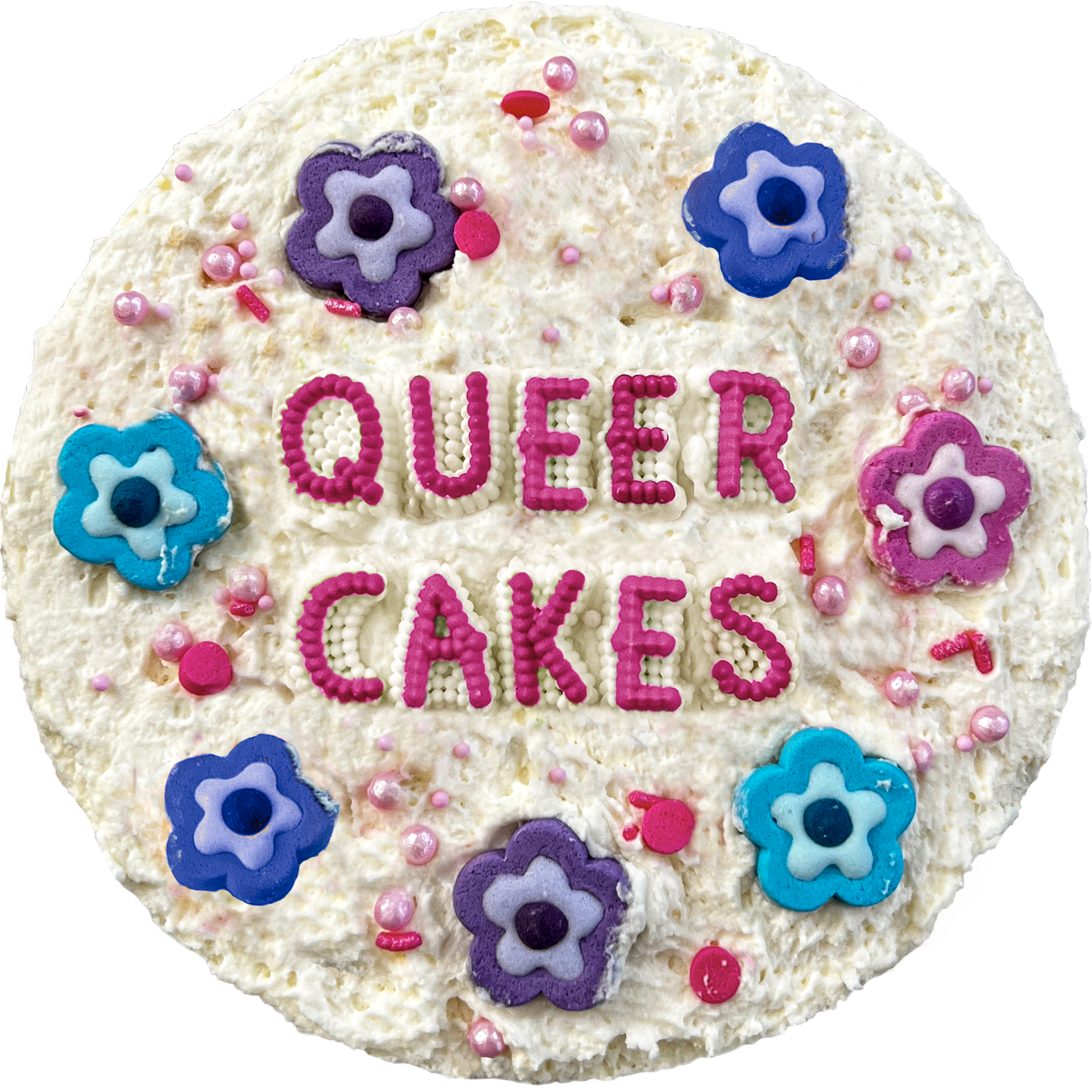This conversation comes from the 10th issue of Robida magazine. Each issue explores a topic connected to Topolò/Topolove, the village on the border between Italy and Slovenia where the collective is based.
How might we learn from the garden — a space of complex, biodiverse entanglements and transformations — as we cultivate places and communities that nourish resilience? In this dialogue, MOLD editor LinYee Yuan, designer Gemma Copeland, and writer Linsey Rendell weave a conversational carrier bag to feel out our ideas, together. A space where experiences, practices, and approaches to tending and exchange can collide, cross-pollinate, and contradict one another — and begin to grow a discourse on gardening as a design method.
Read Ben Derlan’s profile on Robida Collective for MOLD, and order your copy of Robida 10 here.
Gemma Copeland is an Australian designer based in London. She is a founding member of Common Knowledge, a not-for-profit worker cooperative that uses design and technology to help social movements build power. Her practice centres on empowering people to organise themselves, build support structures and imagine post-growth futures.
Linsey Rendell is a writer, editor, and researcher exploring intersections of architecture, ecologies, economies, and social change — to design ways of being and becoming that are gentler for people and the earth. She is from Australia and lives in East London, where she is the temporary custodian of an allotment.
LinYee Yuan is an educator, editor, and cultural organizer living on the unceded land of Brooklyn in Lenapehoking. She is the founder and editor of MOLD and an instigator of Field Meridians. Her practice is rooted in conspiring with human and more-than-human neighbors to build relational architectures for liberation.
Linsey Rendell:
It might be worthwhile clarifying what we think about when we think about the word gardening. For me, gardening is about growing food, and I combine gardening and small-scale farming as one idea in a way. My experience in small-scale farming is rooted in care for the land — caring for Country — and solidarity between growers, and between growers and the communities that they feed. Yet there are other approaches and aesthetics of gardening. What kinds of metaphors are you both thinking about, particularly when exploring the possibilities of gardening as a design method?
LinYee Yuan:
I think a lot about gardening, and part of the work of Field Meridians1 is publishing a newsletter where we speak to gardeners2. It’s not so much about food production, but about gardens as a site for caring. It is a rare site for engaging with ‘nature’ in the context of New York; most people don’t have access to land or a place where they can safely put their hands in some dirt. Gardens, whether they’re community gardens, backyard gardens or stoop gardens, often aren’t solely about food. It’s more about a kind of ease and experience that connects us to things outside the rhythm of the city — time, environment, weather.
Gemma Copeland:
For me, gardens are a space of calm, but also of joyful abundance. There’s something about the connection between abundance and diversity that I feel quite deeply when I’m in a garden. It helps that right now it is May and everything is in full bloom in London — there are so many colours and textures layered over each other. There’s something quite unruly about it as well.
Gardens are also a site of collective care, people coming together to give their time and attention to a collective endeavour. Owning and creating something in common is such a core part of gardening as a design metaphor for me. Ownership is a funny one when you think about it as a design principle because it’s in some ways invisible — you need to work on the level of systems and structures instead of something that you can directly see.
In a way, so much of gardening is not actually about putting things in the ground or sowing seeds. You could spend so little time on that, depending on how much repair a plot needs.
LY:
That also brings up that gardens have clear boundaries — whether they’re enclosed or defined by plots. They’re defined by human ideas around ownership and space. In thinking about gardening as a design metaphor, I also think about defining what we are tending to and growing in those gardens? There’s this whole other membership for gardens that is about community and growing something outside of the garden bed. Your participation can be about taking care of the larger space. Maybe it’s programming, or maybe you water the plants or open the gates.
LR:
In a way, so much of gardening is not actually about putting things in the ground or sowing seeds. You could spend so little time on that, depending on how much repair a plot needs. Opening a gate, making sure there’s enough water for everyone if you have a communal water source, thinking about what will need attention next week or next month. My energy mostly goes to the unglamorous bits.
LY:
Absolutely. We started our Field Meridians newsletter in the fall, which is not typically the time you would imagine talking about gardens. But gardeners had so much to say during those winter months about repair. And to your point about planning ahead, about the kind of promise of the garden, which I love. When you’re not actually doing it, you’re thinking about what you want to do when it’s time. Maintenance is a really interesting part of gardening that we don’t talk about much. How would you describe your own gardening styles?
LR:
To go back to the idea of boundaries, it was quite interesting with my plot when I started at the allotment a year ago. It was a mess, covered with brambles, bindweed, other weeds and rubbish. As I was digging to remove the brambles, I learned that the site was an old landfill of sorts because there are pieces of ceramic and glass that I’m unearthing. So it was a much bigger project just to get started than I originally imagined. The plot is long and skinny, and wonky — it’s not a perfect rectangle in any way. And as I started to clear it, those boundaries became more visible. Because of the experience I have working on a small-scale farm, where we grew in rows rather than growing in raised beds or another form, I decided to start with what I know, which is rows. And I realised I’d taken this space that was completely overrun and chaotic and applied straight lines and borders.
LY:
I’m a very kind of casual gardener. I love doing it, but it’s not precious to me. Every year there’ll be something that will re-emerge from the year before without any sort of plan. I’m not an expert gardener; I just really enjoy the process and the surprise around it. I love the joy that Gem talked about, the abundance of it. How year over year, there’s going to be one crop that’s just going to be nuts and a lot of other stuff won’t survive. So it’s like, what will be the “it” vegetable of the season? Last year it was bitter melon. It is what it is.
GC:
I would say I’m an amateur gardener in the original sense of the word, which comes from the Latin amāre (“to love”) — doing something for love rather than money. For me, it’s about practice, joy, and sensations like putting my hands in the soil. I love helping at community gardens because such a wide range of people attend, who might not know much about gardening, but you figure it out together.
LY:
Part of my curiosity when y’all reached out to me was this concept of digital gardening…
A digital garden is different from other websites in that it’s always a work in progress. You’re working in the open, presenting things that are maybe not necessarily finished and inviting people to be in conversation with you as well.
GC:
I see my personal website as a digital garden. It’s a manifestation of myself and my interests, and I enjoy tending to it in the same way that you would a garden. For me, it’s a space of friendship and community: my dear friend Piper built it for me, and over the years, other friends have helped me maintain it, including fixing problems directly via GitHub commits… This is quite nerdy, but I love the idea of us all ambiently hanging out in a digital space together, noticing and quietly fixing broken things.
When we designed it, we left space for unruliness too. The “Thinking” section is an open space where I can collect my unfinished thoughts and interests in a more freeform way. To connect this back to the idea of maintenance, a digital garden is different from other websites in that it’s always a work in progress. You’re working in the open, presenting things that are maybe not necessarily finished and inviting people to be in conversation with you as well. My website is powered by Are.na, which I would say is an example of a digital garden too, one that we’re all working on and maintaining together. It’s a playful space, where there are moments of serendipity and unexpected connections, and of course, community.
LY:
It’s really all about relationships that you’re tending, cultivating and connecting with through this online or physical garden space. I also like to think about who I’m in relationship with when I’m gardening. Sometimes it’s my human neighbours. When the weather’s nice, my kids, in particular, are very excited about the earthworms that we find as we’re pulling weeds. There’s also an insane amount of bird life happening in our backyards. Brooklyn backyards provide a living corridor where things like birds, squirrels and other feral life can move very freely.
LR:
I quite enjoy being surprised by all the critters who pop out of the earth if you start moving things around or creating vibrations. We have foxes and squirrels on the allotment and many types of birds. Occasionally, there will be a frog living in an overgrown patch, and I’ll go to maintain that patch and it’ll pop out. That’s one of the joyful things.
I like that you use the word unruly, Gem. One of the elders at the allotment — he has been growing there for 45 years — used the word unruly the other day. We often talk together about social issues that are contextual to the people and place where we are. We talk about not controlling and not owning — we humans don’t have control or ownership over the earth or each other. The other day, in one of his more lighthearted moments, he said, “I’m unruly, I can’t be contained”. So that word has been coming up a little in the past weeks.
GC:
Yes, the messiness of social relations as well. The first time I visited Linsey on her plot, I made a comment about it being a utopia, but she pointed out that there are plenty of social tensions there too. When we talk about building communities, it’s important not to shy away from this messiness. To stay with it and find ways to listen to each other, and to leave space for disagreement. I always think of the different types of power as well: what we’re aiming for is not power over others, but power to do things.
LY:
Thank you for underlining that, Gem. I love how community gardens invite us to practice new ways of being together. There aren’t that many spaces, outside of religious organisations, where people have to work together and it’s not in a hierarchical structure or capitalist vision of professionalism. Community gardens force people to think: how are we going to do this work together? How do we share different kinds of power?
GC:
I think there’s a very specific type of relationship that you have with people when you’re trying to get something done together, particularly when you don’t know them very well.
LR:
LinYee, you used the word ‘practice’ just now, but a word you’ve also used in MOLD3 is ‘rehearse’. Rehearsing the future or rehearsing ways of being is something I came across from Farzana Khan of Healing Justice London. The idea of rehearsing feels like it takes a bit of pressure off for things to be perfect. We could use the word rehearse in the same way that if you were designing something, you might prototype it and then iterate on it before you send it out into the world. But if you’re not in a formal design process or a process of designer and client or with a product or some fixed thing at the end of it, then rehearsing feels more human and invites more people in, whereas ‘prototype’ might feel more specific and less accessible to a community.
- 3MOLD is a critically-acclaimed online and print magazine about designing the future of food.
LY:
Language is so important. Words like ‘prototype’ and ‘iterative’ are about creating under a capitalist structure of hard launches and selling products. I love rehearsing, I love practicing. It’s a concept I learned from Dean Spade, who is an activist and lawyer who wrote this great little book called Mutual Aid, and how this unruly, self-generated community structure is a way of practicing how to be together. It’s going to take us many coming-togethers and coming apart for us to all figure out what feels right. And for many of us, community garden infrastructures are messy and can be tense, but ultimately feel joyful and abundant. That’s really an important feeling to hold onto.
LR:
Also time kind of moves in a different way in the context of a community garden. If I’m rehearsing ways of being together with others or ways of configuring how we might live together closely in cities, these things might not be solved in my lifetime. So I’m purely rehearsing for whoever comes next, for whoever might get to live that thing as a habitual way of being.
GC:
The idea of rehearsing or practicing or playing really resonates for me too. It can be overwhelming to think about hyperobjects like the climate crisis or capitalism. If you can’t even get your head around them, how can you possibly respond? That way of thinking — here’s a problem that we must understand and then solve — can be paralysing. There’s something about practising or prototyping that is not trying to address the totality of the problem, but just committing to trying something small, learning from it, trying something else. There’s a lightness to it that facilitates action, which you wouldn’t necessarily get to by trying to design your way out of the crisis from the top down.
LR:
Relationships or relationality kept coming up for me in some research I was doing late last year on economies and also when exploring how to design cities or neighbourhoods if we are collaborating with multiple species or, for example, designing with a river. It’s something I haven’t yet interrogated more deeply, but LinYee, you’re starting to dive into that space. Rather than designing an intervention at the end of a process, perhaps a waste problem, I was wondering if designing relationships sits somewhere earlier if we apply a systems view?
In design it’s important to recognise that there is no universal way of solving any problem, period. Instead, we should be thinking about how we create structures or nodal points where people can then define the problem for themselves and have a kit of tools to potentially address that problem.
LY:
I think the relationship is always the start of the process. In design it’s important to recognise that there is no universal way of solving any problem, period. Instead, we should be thinking about how we create structures or nodal points where people can then define the problem for themselves and have a kit of tools to potentially address that problem. Or maybe a kit to make their own tools, which would be even better. In my research, there’s been a consistent tension at the intersection of alternative economies and relational architectures — should we be leaning into designing economies fully?
LR:
In the contexts and places I’m situated, capitalism and colonisation are the root causes of so much of the social and ecological breakdown we’re experiencing. When I was looking at alternative economies, specifically non-capitalist and anti-capitalist economies — because the economy doesn’t have to mean capitalism — I wondered if we can repair our relationship with economies and if we can enable reciprocal relationships with the land and each other, how much do we really need to live well?4 If we have better relationships — and create relational architectures built on care, reciprocity, solidarity — would the components of today’s economy that are harmful to people and the planet collapse? Gemma also has experience with alternative and community economies, so maybe you want to jump in.
GC:
Yes, I went to a Community Economies Practice Retreat in Italy last summer. A lot of the subject matter we explored originated from the work of J.K. Gibson-Graham5. They argue that there are all these diverse forms of economies that exist within and alongside and against capitalism. Bartering or working in cooperatives or giving gifts or lending between friends and families — these are all economic practices as well. For me, this is just another way of talking about relationships.
One of the readings we did (Economy as Ecological Livelihood by J.K. Gibson-Graham and Ethan Miller6) was about shifting our understanding of the economy to something that is deeply entangled with everything else, both social and ecological, rather than some separate sphere of human activity. In the context of growing food at a farm or a garden, this means seeing all the creatures and plants and bees and soil and everything else as interdependent actors who are creating economies together through reciprocal relationships.
- 5J.K. Gibson-Graham is the collective name shared by feminist economic geographers Julie Graham and Katherine Gibson, who authored books like The End of Capitalism (As We Knew It).
- 6Read the essay.
LR:
Yes, that non-extractive nature of relationship with landscape and with each other. The capitalist economy is incredibly extractive, not only towards the land, but also the extraction from one person to another. In How to be an Anti-capitalist in the 21st Century by Erik Olin Wright, one of the alternatives or reactions to capitalism is escaping capitalism. I think that was my first reaction. And for me, part of that is tied with growing food because when I moved to a farm to learn how to grow food, that was an exchange that was not paid. We also practised other kinds of trade or exchange with our community and with other growers. During that time and later through freelancing and choosing what projects I worked on — paid and unpaid — I was trying to take myself out of capitalism and kind of run away from it. But escaping fully isn’t possible, and it only serves the individual. Now I’m at a stage where I’ve realised how much capitalism dominates so many things, and I have to address it. This is exactly the message that Kate Raworth shares at the start of her book Doughnut Economics, which she wrote in 2013. And then Rona Glynn McDonald, who runs First Nations Futures7 in Australia, has a similar story of seeing how the economy was affecting her community and wanting to find ways to change that. So she studied economics but did not find any answers. She went away from it and has now come back to addressing wealth redistribution head-on.
- 7First Nations Futures is a First Nations-led funding platform redistributing wealth and collectively investing in First Nations initiatives to create intergenerational change in so called Australia.
GC:
Being part of a cooperative for the past five years, I’ve realised that our co-op is simply a web of relationships between our members. It’s something that we create, every day, through relating to each other. As we bring more people in — there are seven of us now — it adds layers and layers of complexity because it’s my relationship with one person, their relationship with another, my relationship with that person, the relationship between the three of us, and so on. It becomes very thick and entangled.
It has been a very interesting process learning how to do this together. It requires constant negotiation and communication. This idea of rehearsing from before — it’s a lot of trying things out and seeing what works. We’re creating the conditions for things to happen, rather than always knowing exactly what it is that we’re creating together. What I really love about this is that, whatever emerges from these relationships and processes, both in terms of the work we do or the co-op itself, is something that could never exist without the combination of all of us. It makes it so special, so unexpected.
Lately I’ve been spending a lot of time forming relationships with other organisations and networks, connecting with people and creating alliances or coalitions on different scales. If we’re trying to create alternatives to capitalism, the answer isn’t individual organisations growing infinitely — that’s a capitalist mindset. Instead, it’s about growing the network or networks of networks. Achieving change, the kind of radical change that we want, through building relations.
LY:
The idea that gardening is more of a kind of facilitation dovetails nicely into this question of tools. As we’re thinking about it, these “tools for resilience” are actually the relationships we have with one another. The physical tools we might generate today could be useless tomorrow. Things are precarious and changing so rapidly. The shape of our neighbourhoods in New York is being destroyed (others might say reconfigured) by development, and it’s for who, why? It’s the facilitation of these rhizomatic networks and alliances that will then self-generate tools for resilience against precarity and the continued gentrification of our communities.
LR:
Gem, when you spoke about letting things emerge, that approach feels like it requires so much trust in a capitalist economy. So I was wondering if that emergence approach is that a kind of tool? Or is it an approach? It could come down to language.
GC:
I would say that, in the context of my co-op, this kind of emergence couldn’t happen without trust. We’ve really worked on this over time, over several very rocky periods, and now we have such deep trust in one another. I think it’s a core component of being in community with people. Thinking back to what we were saying before about working with people that you might not necessarily agree with, how do you create trust in that context? How do you build trust with neighbours or strangers? I think it would be interesting to explore tools around creating that kind of trust.
LY:
It’s also a certain kind of deprogramming, right? We’re taught not to trust people or their intentions. A friend of mine leads a community fridge organisation8, and one of the things that is hard for people is to let go of control. People ask, well, what if someone takes all of the food? You just have to trust that the work is enough and that the infrastructure of the fridge serves its purpose. And you, within that larger system of caring for the fridge and delivering the food, also serve a purpose. We’ve been taught that being out of control is a bad thing. I just love this idea of, again, practicing or rehearsing trust, letting go of things, and the unruly, the chaos, the humanness of it all.
- 8One Love Community Fridge works to connect, empower and engage the community through education and providing access to fresh, healthy food with no stigma.
GC:
That reminds me of one of the poems in the Le Guin translation of the Tao Te Ching, particularly this line: “To bear and not to own; to act and not lay claim; to do the work and let it go: for just letting it go is what makes it stay”. There is something about giving something up and not trying to be the one owning it, not trying to be the one controlling it, that is much more powerful in the long run. But this can be difficult or scary or sometimes frustrating.
LR:
I think the main lesson that I have learned and continue to learn from the plot is that I have to let go. I am a fastidious user of my calendar; everything is mapped out. There’s a Notion page documenting as much as I can put time into documenting so that I’m retaining that knowledge each year and remembering how the seasons unfold. There’s a to-do list that I’m keeping track of in multiple ways. But the to-do list will never be done, and that has to be okay. And that’s one of the lessons that I keep having to learn and keep having to be okay with — that I have to let go. That came up in Brian Eno’s essay Composers as Gardeners9 — “to surrender and to cooperate”. Both of those things have kept coming up in this conversation today.
GC:
Yeah, one of Brian Eno’s design principles10 for designing cities is to “think like a gardener, not an architect: design beginnings, not endings”. And I really love that. It’s obviously related to planting seeds: just starting something, seeing what happens and enjoying whatever emerges.
